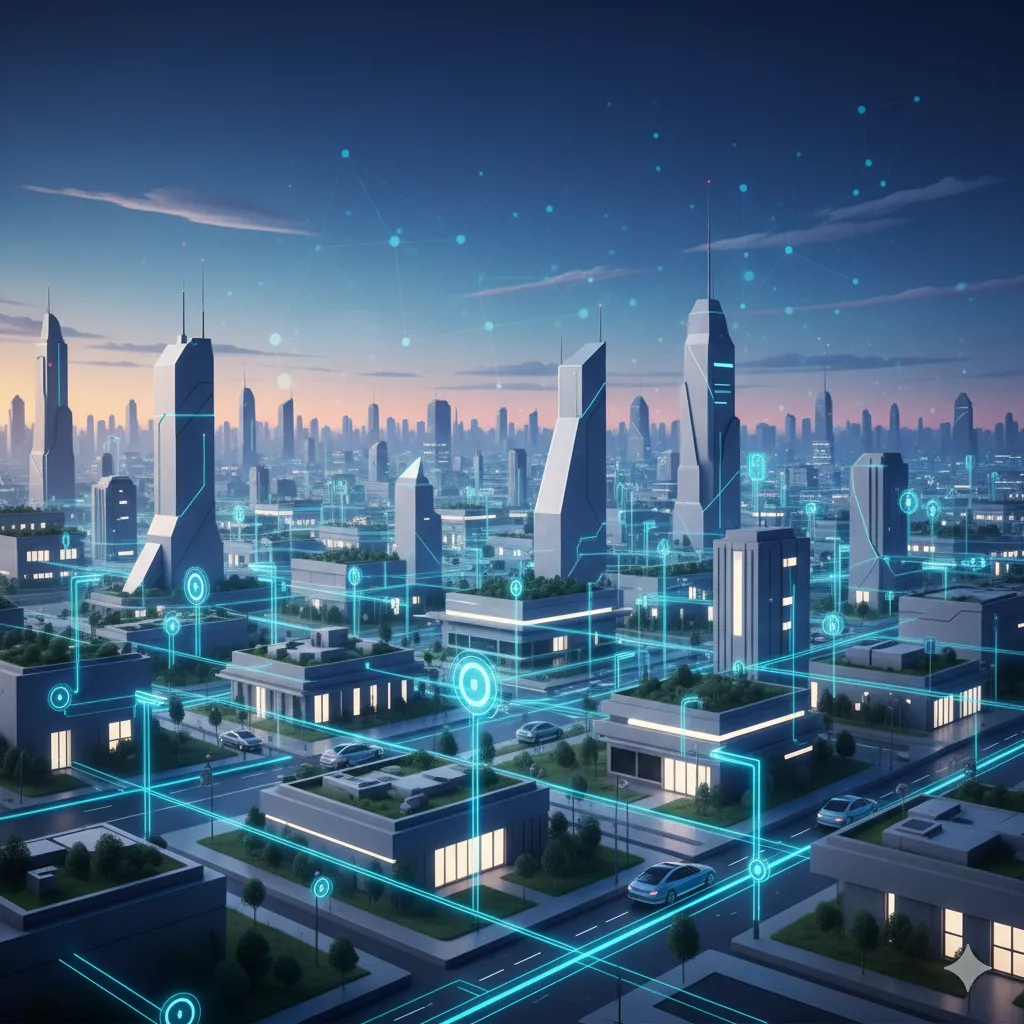We live in a world where everything around us — from watches and cars to refrigerators and streetlights — is becoming “smart.” These devices talk to each other, share data, and make life easier without us even realizing it. This powerful shift is thanks to something called the Internet of Things (IoT). But what is Internet of Things (IoT) exactly, and why does it matter? Let’s break it down in simple words.
What is Internet of Things (IoT)?
Internet of Things (IoT) is a network of physical objects attached to the internet, gathering and sending data among themselves. These objects usually possess sensors, software, and other technology so that they can “talk” and act by themselves without human intervention.
In other words, IoT is all about making simple things smarter by linking them to the internet.
For instance:
- Your smartwatch records your steps and transfers the data to your phone.
- Your thermostat automatically controls the temperature in the room depending on your routine.
- A smart refrigerator can notify you when the groceries are low.
All of this is made possible by IoT.
A Brief Look at the History of IoT
Though the “Internet of Things” name only gained traction during the early 2000s, the concept was around much earlier. During the 1980s, scientists networked a Coca-Cola dispenser with the internet to monitor drink stock remotely — an early example of IoT.
Since then, wireless networks, sensors, and cloud computing have continued to advance in such a way that it has become feasible for billions of devices to join the IoT family. Today, IoT is more expansive than ever and continues to transform the way we work and live.
How Does IoT Work?
IoT devices operate on a straightforward process:
- Sensing – Devices gather data from the surroundings (such as temperature, movement, or use).
- Connectivity – They transmit this information via the internet using Wi-Fi, Bluetooth, or cellular networks.
- Processing – Cloud platforms or applications process the data and determine what to do next.
- Action – The device behaves automatically or alerts a user depending on the findings.
For example, a home security camera uses AI to detect motion (sensing), route the information to the cloud (connectivity), process whether it’s a human or a pet (processing), and notify your phone (action).
Examples of IoT in Real Life
These are some of the usual ways Internet of Things (IoT) already exists in our lives:
- Smart Homes: Smart lights, thermostats, and voice assistants perform everyday tasks automatically.
- Smart Cars: Vehicles transmit real-time information for navigation, safety, and maintenance.
- Industrial Internet of Things: Industries employ sensors to track machinery and enhance efficiency.
- Smart Cities: Traffic management, waste collection, and power grids utilize IoT to enhance urban living.
- Health: Wearables monitor vital signs, and IoT-supported devices monitor patients remotely.
Why IoT Matters – Its Benefits and Impact
IoT isn’t convenient — it’s reshaping industries and everyday life in profound ways:
- Efficiency: Does tasks automatically and saves human effort.
- Data Insights: Empowers businesses and users to make informed decisions with real-time data.
- Cost Savings: Identifies problems early and minimizes waste.
- Safety: Improves security at home, on the road, and in the workplace.
- Sustainability: Assists with energy consumption and environmental reduction.
The Future of Internet of Things (IoT)
The future of IoT holds tremendous promise. Experts envision that by 2030, more than 25 billion devices will be connected globally. We will experience smarter homes, smarter cities, autonomous cars, and even intelligent healthcare systems that save lives.
With the emergence of new technologies such as 5G, edge computing, and artificial intelligence, IoT is going to be faster, smarter, and more secure — leading to innovations we can’t even dream of today.
Final Thoughts
So, what is Internet of Things (IoT)? It’s the concept of making ordinary things internet-connected so they can talk to each other, exchange information, and simplify our lives. From wearable sensors to smart homes, self-driving cars to smart cities, IoT is revolutionizing our lives, work, and interactions with the world.
As technology improves, the future of IoT will only expand — changing the face of everything from healthcare and transportation to business and everyday life.
